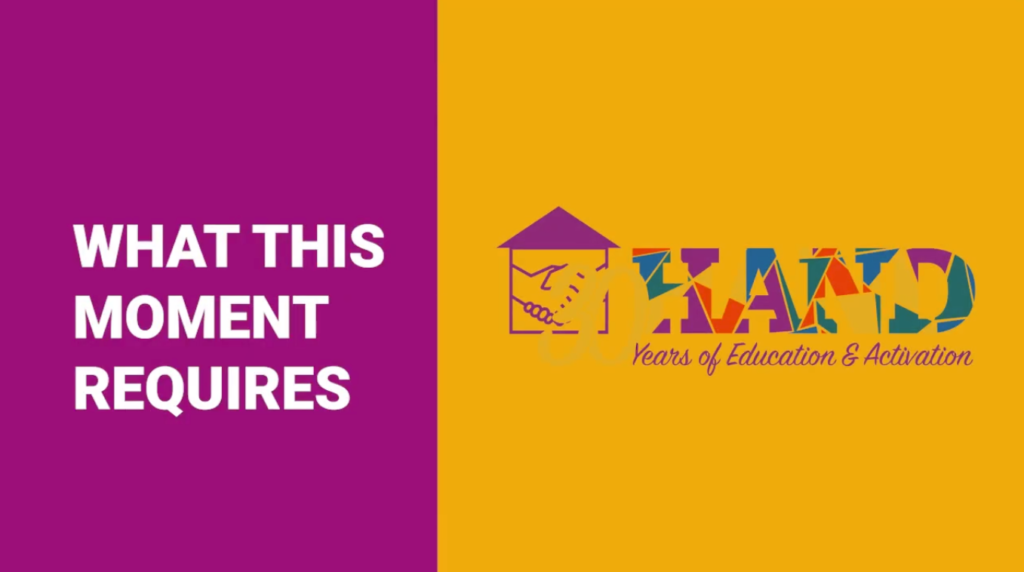by Courtney Battle, Membership Director, Housing Association of Nonprofit Developers (HAND)
The FWD #G13 • 690 Words
First-of-Its-Kind Tool Measures Progress Towards Meeting Regional Housing Targets
Even as we begin to see the light at the end of the pandemic tunnel with the rollout of vaccines and the lightening of restrictions, it’s safe to say that we’re not out of the woods yet. Thousands of cases still exist throughout the nation, and in some areas the numbers are climbing at an alarming rate. Here in the Capital Region of Baltimore, Washington and Richmond we’ve also seen our fair share of damage – not just bodily harm to individuals, but the economic crisis, and the exacerbation of a system built to benefit some at the expense of others.
This system was created long before the existence of COVID-19, the Great Recession of the late 2000s, and even before the Civil Rights movement of the 1950s and 1960s, and it is rooted in an ideology that black, indigenous, and people of color are inferior to other races. Over hundreds of years, this structure has permeated our very way of life – from our education system to where we worship and even housing. Redlining, racialized zoning and covenants, subprime mortgages, and disinvestment in black and brown communities are just a few of the ways in which this system has created barriers to opportunity over the course of decades.
This pattern of systemic racism coupled with the ongoing housing affordability challenge in the Capital Region will require an all-hands-on-deck strategy to start carving a way forward. The Housing Indicator Tool (HIT) helps get us started in addressing racial and economic inequities through the vehicle of housing. Created by the Housing Association of Nonprofit Developers (HAND), this one-of-a-kind platform holds the affordable housing industry, private and public sectors accountable with the latest information on housing production across the region and a comparison with established local housing targets.
While targets are a critical component of affordable housing production, it is a complex endeavor that is facilitated by a wide range of policies, tools, funding sources and strategies working in concert. The key to moving the needle on this issue is having priorities set, and simultaneously having the tools and policies in place to respond to your housing needs. The following are five policy areas identified within the HIT as key tools a jurisdiction should have in its toolkit to address their affordable housing challenges in a meaningful way:
- Housing Priority: Does the jurisdiction identify affordable housing as a priority in its Comprehensive Plan, Housing Master Plan, etc.?
- Inclusionary Housing: Does the jurisdiction have a mandatory or voluntary inclusionary housing program whereby the jurisdiction requires or incentivizes the production of below-market rate housing units as part of market-rate developments, either on-site, off-site, or in the form of a fee in lieu?
- Housing Trust Fund: Does the local jurisdiction have a local housing trust fund that is currently funded?
- Property tax, Impact fee, Tax or Fee abatements or Exemptions: Does the jurisdiction offer property tax, impact fee or other abatements or exemptions to rental housing projects that include committed affordable housing units?
- Public Land: Does the jurisdiction make publicly-owned land available for affordable housing?
Over time as the above tools and policies are implemented or scaled, the HIT can be used to gauge what is working (or not), and if these tools are successful in helping jurisdictions reach their annual housing targets.
Where to start with the HIT? Visit HAND’s HIT Hub where you can access the HIT, and read Compounding Interests, Compounding Inequities: Racism, Housing, and Our Region’s Responsibility to Act. This companion piece to the tool provides key context to support the local data, highlights on successful models and more. The HIT itself provides you access to each of the jurisdiction’s dashboards, detailing local progress and the policies in place to increase the supply of affordable housing. There you’ll also find other key resources to help YOU take action – a letter to send your elected officials, an opportunity to share your own affordable housing story and a number of other tools. Join the movement of increasing and preserving affordable housing today, and together we can create more just, equitable outcomes for our communities tomorrow.
To learn more about HAND, visit www.HANDHousing.org.
HousingForward welcomes guest blogs from our partners. If you have a message you’d like to share, contact us.
